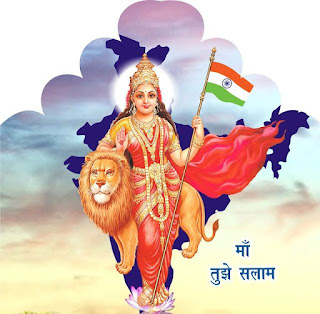Kolkata 4.0: What's The Point?
Kolkata needs a fresh start.
One of the first mega-cities in Asia, and $150 Billion economy, has fallen from grace, somewhat. It is no way a 'dying city' as Rajiv Gandhi, then Prime Minister of India, called it, but it has decisively lost its urban glory. The seat of a brilliant creative 'awakening' in the late Nineteenth and early Twentieth century, now the city loses its aspirational young people as they migrate to other cities in search of educational and economic opportunities.
Once the home of many of India's largest corporations and many of the big multinational corporations, the City experienced an exodus of business and talent in its dark days in the mid-seventies, something that never came back.
Steeped in dreams of changing the world, this City lived through its street-fighting years of the late Sixties, something that was brutally crushed by the authoritarian Central Government of Indira Gandhi; the end of dreams meant degeneration, as the best and the brightest fled to exile, or joined the servile middle classes, ceding the political space to the lumpen and the demagogues. Once the cosmopolitan, creative heart of India, it swung to the opposite extreme - a commodity economy beholden to a few moneyed men who greased the wheels of politics.
This, along with the dated ideology of the Communist government that ruled Bengal for more than three decades, meant that the state - and the city - was governed by an 'extractive' approach to development: A closed-economy paradigm that is terribly out of place in a regional economy, the tax-and-spend indulgences, and an uninformed fear of technology and globalisation, that continued for much longer than the rest of India. While the rest of the country spoke about 'Knowledge Economy' (however meaningless the term can be), the politicians in Kolkata treated colleges more as recruiting grounds for cadres and hooligans, insisted that English language should be kept out of State School syllabuses for as long as they could, and blocked the expansion of the education system when new colleges were going up everywhere else.
Kolkata missed the post-liberalisation transformation of India almost by design and intent. Even as its young people left for the private Engineering colleges and IT Jobs in Bangalore and elsewhere, the Bengal policy-makers - ironically for a State proud for its imagination and creativity - suffered a paralysis of imagination. Missing the Global Back-Office Economy, they created a Backwater economy, dependent on minerals and real estate, with attendant corruption and lack of opportunity.
But it is still not a Dying city, because of its people, the very thing that the policy-makers decided to overlook for so long. The embers of the Bengal Awakening are still alive and warm. The city still has some of the best schools in the Country, and some of its best institutions. Its tradition of creativity lived on, and the flight - despite its disastrous immediate impact - gave Kolkata a global diaspora that holds the key for a fresh start. Its manufacturing expertise survived the onslaught of over-regulation. Closer and warmer relationship with Bangladesh meant the creative industries in Kolkata could prosper again, accessing the larger Bengali-speaking markets for its creative output.
These things count, just as the post-Liberalisation economic model - that fuelled by the easy globalisation dominated by IT services industries - reaches a crossroad. Protectionism, automation, new economic configurations with China at the heart of the world economy, demand a new approach. The failures of the earlier era become less of a handicap when the doors of the new opportunities arise - it is open season again for economic imagination.
Kolkata 4.0, a private initiative, is aimed at harnessing the City's strengths for this brave new world, aims at harnessing the city's strengths, enabling the ecosystems, and aiming for the new opportunities. Yet, its ambitions are limited: Politics may have played a major role in shaping the City's economic fortunes (and it continues to be important) and some possibilities of changing the city remains in the realm of politics (like a special relationship with Bangladesh, and allowing Bangladeshi businesses favourable treatments in setting up businesses in Bengal), but Kolkata 4.0 is engaged in policy conversations only in a very limited way. Rather, our aim is to connect and foster individual initiatives, working in the realms of entrepreneurship, education and exchange of ideas and people.
This may all sound very wonderfully naive, a Garden Party initiative true to the tradition of Bengali Bamboozle. However, here is the central thesis - that Kolkata's decline is primarily due to the disconnection of its professional elite and reconnecting them back is a necessary first step of a refresh. There is also, right now, an opportunity - a moment of breaking of the old models of globalisation, a wave of global politics of identity that makes the footloose Professional Elite reassess their assumptions, a stagnation of commodity and real estate making other opportunities appear attractive etc. - and creating cross-border and cross-functional conversations is more potent than ever.






Comments